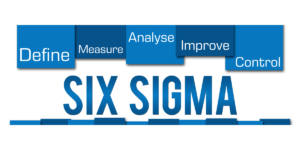Retail leadership in the UK in 2025 is more complex and demanding than ever. Rising operational costs, shifting employee expectations, and the disruptive impact of AI are all transforming what it means to be a great store manager. Today’s leaders must go far beyond managing schedules and hitting sales targets—they must create cultures of resilience, use technology wisely, and build strong leadership pipelines from within.
In this guide, we’ll explore:
- The top challenges UK retail managers face in 2025
- How AI is reshaping daily retail operations and decisions
- Why succession planning is critical in an industry with high turnover
- Practical tips and frameworks to lead more effectively
Whether you’re a current manager or an aspiring leader, this article will help you thrive in the ever-evolving retail landscape.

📊 Retail Leadership UK 2025: Trends & Data at a Glance
Let’s start with a snapshot of the current UK retail climate:
- 🔁 50.8% turnover – More than half of retail staff leave within a year (Distinct Recruitment)
- 📉 Sales fell 2.7% – Retail volumes dropped in May 2025 (ONS)
- 💸 £5 billion labour cost rise – Wage and NI hikes strain budgets (BRC)
- ❌ 63% of hourly workers plan to quit within 12 months (Legion Report)
- ✅ 68% of workers say flexible schedules are their #1 priority (Legion)
These numbers reveal what many managers already feel: pressure from every angle. In this environment, successful leadership is no longer about control—it’s about adaptability, empathy, and strategic use of tools.
🚧 Top Challenges Facing UK Retail Managers
1. 📉 Retention Crisis
The biggest challenge is keeping good people. With turnover at over 50%, managers are constantly backfilling roles, losing momentum, and dealing with stretched teams.
What’s causing it? Poor work-life balance, low pay perception, limited career progression, and burnout.
What to do:
- Use smart scheduling software to create more stable, staff-friendly rotas.
- Create transparent development pathways. E.g., post a “Retail Career Ladder” in your break room.
- Set 30-day and 90-day check-ins with new hires to listen and address issues early.
- Track and celebrate milestones—completion of training, customer compliments, even punctuality.
Retention improves when staff feel seen, supported, and developed.
2. 😰 Burnout & Stress
Retail leaders are often doing 3 jobs in one: running operations, supporting people, and responding to last-minute problems. Many frontline teams feel equally overwhelmed.
What’s driving it?
- Understaffing and long shifts
- High emotional demands from customers
- Repetitive, low-autonomy tasks
How to respond:
- Use automation to free up time: AI-driven rotas, digital break alerts, KPI dashboards.
- Build “recovery culture”—rotate weekends off, protect breaks, encourage time away.
- Introduce quick daily huddles to realign priorities and decompress.
- Include well-being as a KPI: track absence patterns, early finishes, mood check-ins.
Burnout isn’t a people issue—it’s a system failure. Address it at the process level.
🧘♂️ Struggling to manage pressure, priorities, and people at once? Learn how to regain control with our guide: Strategies for Managing Time and Stress in Today’s Busy World — ideal for retail leaders navigating intense environments.
3. 📈 No Leadership Pipeline
Many managers are promoted by necessity, not readiness. And when someone quits or moves on, stores scramble to fill the gap.
Why it happens:
- No succession plan
- Not enough time for development
- Lack of clarity on promotion paths
Practical fixes:
- Use a simple “Leadership Skills Tracker” for team members.
- Delegate tasks like shift briefings, cashing up, or mentoring to test leadership potential.
- Run internal mini-apprenticeships: 4-week modules on people, stock, or service.
- Document key tasks (like store open/close) so others can shadow or step in.
A solid bench of future leaders creates stability, lowers stress, and builds culture.
🤖 How AI Helps Retail Managers Win
AI is one of the biggest disruptors—and opportunities—in retail. It won’t replace managers, but it will dramatically change how they operate. Those who learn to work with AI will outperform those who resist it.
🧠 What AI Can Do for You:
🕒 Smart Scheduling
AI scheduling tools—like Rotageek, Deputy, or Planday—analyze sales patterns, footfall data, local events, staff preferences, and even weather forecasts. They generate predictive rotas that reduce guesswork, improve coverage, and save hours each week.
You can:
- Eliminate rota errors and missed compliance
- Align shift patterns with busy periods
- Offer more consistent, staff-friendly shifts
This reduces fatigue, improves service quality, and keeps labour costs on track.
📊 Real-Time Dashboards
Modern AI platforms aggregate store KPIs—sales, conversions, wait times, returns—and visualize trends in real time. You’ll be alerted to issues (e.g. abandoned baskets, refund spikes, shrinkage patterns) before they become performance killers.
Managers can make better decisions faster, and more confidently lead daily huddles with meaningful insights.
📱 Repetitive Task Automation
AI isn’t just for strategy. It’s excellent at repetitive admin:
- Auto-approving common time-off requests
- Forecasting inventory replenishment
- Sending reminders for breaks, training, and compliance
This frees managers from back-office busywork, giving them time to coach, develop staff, and lead on the floor.
🧘 Better Team Experience
By removing tedious admin and creating more predictable schedules, AI improves how teams experience work. Employees know when they’re working, can easily swap shifts, and get more face time with their manager.
It also means fewer last-minute schedule changes and improved communication—two of the biggest drivers of turnover.
Pro Tip: Train your team to understand how the AI works. Transparency builds trust and reduces resistance. Review AI suggestions before approving them. Human judgment still leads—it’s just supercharged now.
🎓 Want to level up your AI leadership skills? Explore our curated list of Top 10 AI Courses Every Leader Should Take in 2025 — perfect for forward-thinking managers ready to lead with confidence.
🧭 Succession Planning for Busy Stores
Without a plan for who steps up next, every promotion or resignation becomes a crisis. Yet most stores don’t have a leadership pipeline in place. This often leads to rushed hires, burned-out team leads, and dropped standards.
Succession planning doesn’t have to be complex or corporate—it just has to be intentional. Here’s how to start building a future-ready team in-store:
Step 1: Identify High-Potential Staff
Start by watching for consistent behavior:
- Are they proactive without being prompted?
- Do they remain composed under customer pressure?
- Do others go to them for help or advice?
Keep a short list of names and log examples in a shared leadership notebook or on a team whiteboard. Ask your assistant managers or senior staff for their input too. You’re looking for people who consistently model leadership behaviors—not just those who perform tasks well.
Step 2: Assign Stretch Tasks
Once identified, give them small but meaningful leadership responsibilities:
- Leading a daily team briefing
- Overseeing visual merchandising for a section
- Coaching a new hire through onboarding
- Handling a delivery and backstocking operation
Make sure they know these are development tasks, not just extra work. Follow up with a short debrief: “How did that feel? What did you learn?” This builds trust and accelerates growth.
Step 3: Use a “Ready-to-Promote” Checklist
Create a simple tracker or checklist for each team member in development. For example:
- ✅ Can process refunds and deal with complaints professionally
- ✅ Can open and close the store unaided
- ✅ Has coached or trained another team member
- ✅ Demonstrates reliability in keyholder duties
- ✅ Understands key KPIs and how to impact them
When they can tick off 3–5 of these, it’s time to have a formal career conversation. Outline the next role (e.g. team leader) and what support they’ll need to get there—training, coaching, or cross-department exposure.
Bonus Tip: Build a Visible Talent Pipeline
Consider keeping a “Next Leaders” list visible to your leadership team or HR. This helps everyone align around who’s growing and who needs more support. It also helps when opportunities arise, like covering for absence or launching a new initiative.
Succession isn’t about perfection—it’s about progress. Preparing your team to lead means fewer firefights and a stronger culture of growth. Great leaders don’t just lead the team—they build the next one.
✅ 5 Practical Leadership Tips for 2025
In a role that demands both daily execution and long-term strategy, store managers need go-to habits that reduce pressure and build momentum. These five leadership behaviours are simple to implement and scale across any size team.
1. Flex Sells
Flexibility is now a deciding factor for joining—and staying in—retail. Use tools like Planday or Deputy to build shift patterns around employee availability, traffic forecasts, and real-time feedback. Offer “core hours” plus swappable flex zones to give autonomy and improve retention. Posting schedules at least 2 weeks in advance shows respect and builds trust.
2. Coach Daily
Great leaders don’t wait for performance reviews. Make feedback part of your daily rhythm. Use moments after tasks (“Great close tonight—what would you improve?”) or pre-shift (“Today’s challenge—beat yesterday’s conversion rate. Let’s do it.”) to create learning loops. When coaching becomes the norm, performance naturally improves.
3. Go Data-First
Trust your gut—but back it with numbers. Use daily dashboards to monitor key metrics: basket size, staffing vs. traffic, refunds, customer feedback. Start morning huddles by spotlighting a stat and asking the team to respond. “Sales were up 8% yesterday—what worked?” gets more buy-in than “Let’s just do better.”
4. Protect Energy
Burnout doesn’t begin with exhaustion—it begins when people feel like their effort doesn’t matter. Guard rest and recovery like profit. Enforce breaks, rotate undesirable shifts fairly, and discourage overtime unless critical. Empower team leads to ask “Who needs a breather?” and normalize stepping back to reset.
5. Make Growth Visible
Talk about your own journey (“I started as a part-timer, now I lead this team”) and showcase others who’ve stepped up. Post mini-progression ladders on your staff board or Slack group—“How to go from stockroom to supervisor in 6 months.” Recognize milestone wins publicly. Visible growth = visible motivation.
These strategies don’t just improve output—they strengthen loyalty, clarity, and store culture.
🧠 Frequently Asked Questions
What’s the biggest challenge facing UK retail managers in 2025?
The top challenge is retention. Over 50% of staff leave within 12 months, according to 2025 UK data. Managers must balance hiring, training, and performance with fewer stable team members.
How can AI help with staff scheduling in retail?
AI tools like Rotageek and Planday use sales, weather, and footfall data to auto-generate optimized rotas. This saves time, reduces overstaffing, and improves employee satisfaction.
What are smart ways to do succession planning in-store?
Identify high-potential staff early, assign them mini-leadership tasks, and track readiness with a checklist. This builds an internal leadership pipeline and improves retention.
What is the best way to prevent burnout in retail teams?
Use fair rotas, protect break times, rotate shifts, and show appreciation often. AI can help balance workloads. Plus, setting clear growth paths reduces emotional fatigue.
🧠 Final Word
Retail leadership isn’t about doing more—it’s about doing the right things smarter.

With AI at your side, the right systems in place, and a focus on people-first leadership, you can reduce stress, build loyalty, and drive performance in one of the most demanding environments in the UK.
This is your chance to lead retail forward—not just run a store.
✅ Let AI handle admin
✅ Build your next leaders before you need them
✅ Show your team there’s a future worth staying for
🧠 Want to lead smarter, not just harder?
Access your free Retail Leadership Hub 2025 — a Notion-powered dashboard to help store managers coach better, plan smarter, and grow leaders from within.
✅ Weekly checklist
📈 KPI + coaching tracker
🤖 AI usage log
🧑🤝🧑 Talent pipeline
📝 Printable + shareable PDFs
→ Use it. Duplicate it. Make it yours.
🖨️ Prefer something printable?
Download the 1-page Retail Leadership Habits Checklist 2025 to start applying smart leadership habits today — no tools or login required.












The insights you provide are incredibly enlightening, blending detail with clarity. It would be great to see you explore how these ideas interact with new developments, like artificial intelligence or sustainable living. Your knack for unraveling complex topics is remarkable. Thanks for always delivering such thought-provoking content—I’m excited to see what you’ll cover next!
source
there